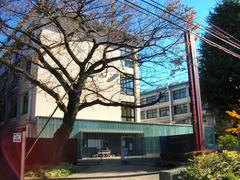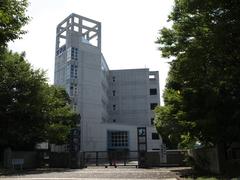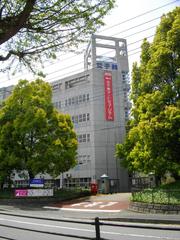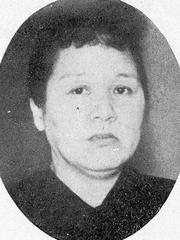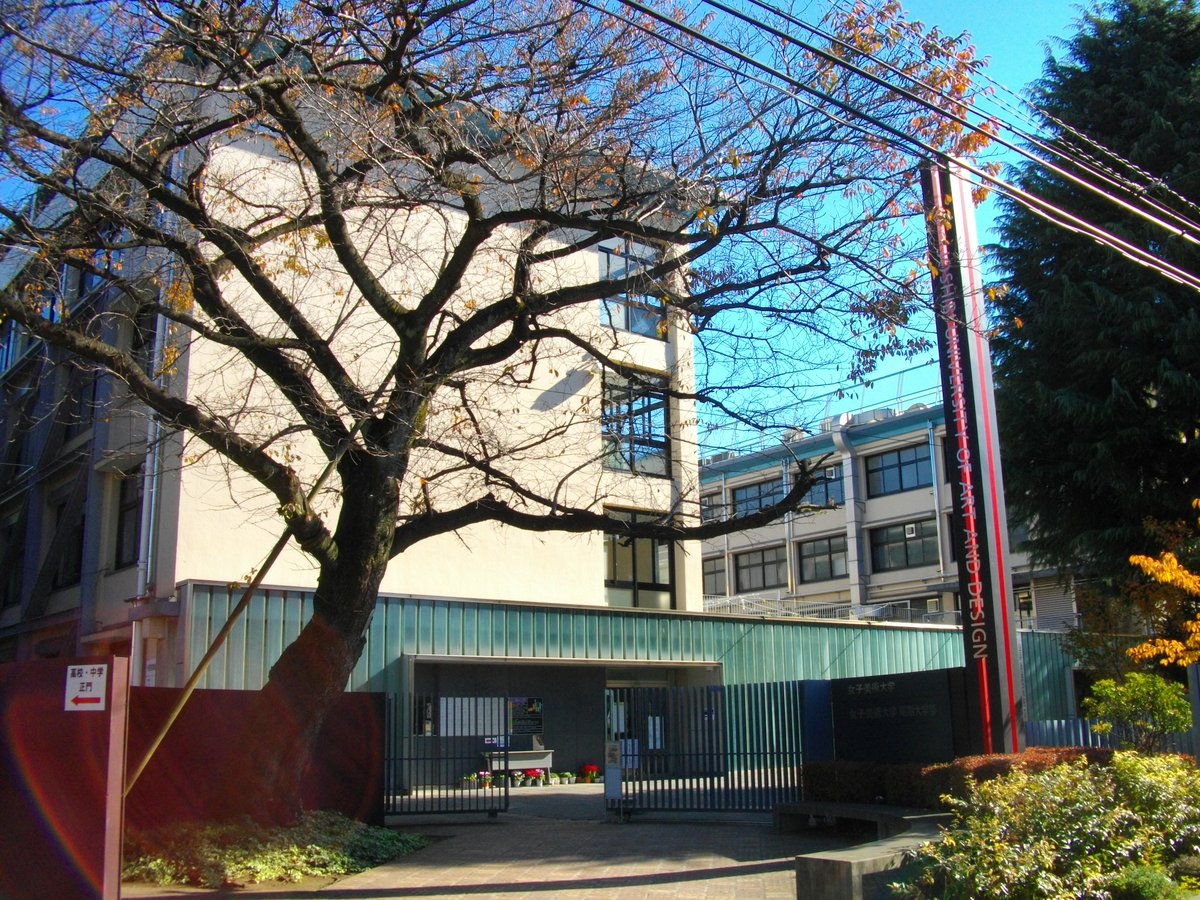
Joshibi University of Art and Design Tokyo Visiting Guide: Tickets, Hours, and Attractions
Date: 14/06/2025
Introduction: History, Cultural Significance, and Visitor Experience
Joshibi University of Art and Design, with campuses in Tokyo (Suginami) and Kanagawa (Sagamihara), is a pioneering institution in Japan’s art education, particularly for women. Founded in 1900 as the Private Women’s School of Fine Arts, Joshibi was Japan’s first art school exclusively for women, established to empower female self-reliance through the arts and elevate women’s social status (Joshibi Global; Joshibi English). Over the decades, the university has grown into a comprehensive art university, offering undergraduate and graduate programs in fine arts, design, and crafts, while preserving its mission to foster creativity, technical excellence, and social engagement.
Visitors can explore the Joshibi Art Museum (JAM), which houses over 2,000 artworks and a significant collection of textile and dyed fabric cultural assets. The museum operates on both the Suginami and Sagamihara campuses, serving as a vibrant cultural hub. Experiences available include seasonal exhibitions, guided tours, and workshops, all set within an environment that celebrates both traditional Japanese arts and innovative design disciplines (Joshibi English; Joshibi Global).
This guide provides essential information for visiting Joshibi University and its museum, including hours, ticketing, accessibility, travel directions, and recommendations for nearby Tokyo historical sites. By understanding Joshibi’s historical significance and cultural contributions, visitors can fully appreciate the institution’s ongoing impact on Japan’s artistic landscape (Wikipedia; Mabumbe).
Table of Contents
- Historical Overview and Significance
- Academic Structure and Study Areas
- Visiting Joshibi: Hours, Tickets, and Visitor Info
- Cultural and Artistic Contributions
- Legacy and Ongoing Evolution
- FAQ
- Enhance Your Visit
Historical Overview and Significance
Founding and Early Development (1900–1949)
Joshibi was founded in 1900 by Tamako Yokoi and Bunzo Fujita as the Private Women’s School of Fine Arts (Joshibi Global; Wikipedia). Its mission focused on empowering women through art, improving their social standing, and training women art teachers (Joshibi English). The school opened in 1901, initially enrolling 60 students in Tokyo’s Bunkyo district, and survived early financial difficulties thanks to the leadership of Shizu Sato. After a fire destroyed the campus in 1908, Joshibi relocated and continued expanding, opening an attached high school in 1915 and being recognized as a technical college in 1929. The Suginami campus opened in 1935 (Joshibi Global).
Postwar Reforms and University Status (1947–1970s)
In the wake of postwar educational reforms, Joshibi established Sato Junior High School (1947) and Sato High School (1948), then officially became a university under Japan’s new education system in 1949 (Joshibi Global). The institution expanded with the creation of a short-term college in 1950 and the renaming of its high school in 1951, solidifying its position as a comprehensive center for women’s art education.
Expansion and Modernization (1980s–Present)
Joshibi’s Sagamihara campus opened in 1990, providing a spacious, nature-rich environment for creative work (Joshibi English). Graduate programs followed: Master’s in 1994 and Doctoral in 1996 (Joshibi Global). The 100th Anniversary Building and Joshibi Art Museum (JAM) were completed in 2001, with JAM now safeguarding more than 2,000 artworks and 11,000 textile assets (Joshibi English; Educativ). Research institutes, such as the Dyeing and Weaving Cultural Resources Institute, further underscore Joshibi’s role in both preservation and innovation (Joshibi Global).
Women’s Art Education and Social Impact
Joshibi has been instrumental in advancing women’s rights and access to art education. Notably, it provided education to women decades before Tokyo University of the Arts admitted women in 1946 (Wikipedia). The university’s educational philosophy integrates technical skills, creativity, and social contribution, producing generations of influential artists and educators (Univ Journal).
Academic Structure and Study Areas
Joshibi offers undergraduate, graduate, and short-term programs structured into departments such as Fine Arts, Design and Crafts, Art and Design for Spatial Experience, and Collaborative Design. Specializations include Japanese and Western painting, sculpture, printmaking, textiles, ceramics, visual and product design, media art, and art education (Joshibi Global; Joshibi English). The university enrolls around 2,000–2,999 students and, while women-only, welcomes international students through exchange programs (Mabumbe).
Visiting Joshibi University of Art and Design: Hours, Tickets, and Visitor Information
Visiting Hours
- Joshibi Art Museum (JAM): Open Tuesday–Sunday, 10:00 AM–5:00 PM. Closed Mondays and major holidays. Check the official website for seasonal changes or special closures.
Ticketing & Admission
- General Admission: Usually free for regular exhibitions; special exhibitions may require a ticket.
- Purchase: Tickets for special events can be obtained on-site or online.
- Group Visits: Educational groups and tours should book in advance.
Accessibility and Facilities
- Accessibility: Both campuses and the museum are wheelchair accessible, with ramps, elevators, and adapted restrooms.
- Visitor Support: Contact the museum ahead of time if you require additional assistance.
Guided Tours & Special Events
- Guided Tours: Offered periodically by reservation, providing deeper insights into collections and textile arts.
- Events: Seasonal workshops, lectures, and exhibitions are open to the public.
Photographic Spots
- Suginami Campus: Highlights include the 100th Anniversary Building and landscaped gardens.
- Sagamihara Campus: Features green spaces ideal for photography, especially in spring and autumn.
Getting There & Nearby Attractions
- Suginami Campus (Tokyo): Accessible via JR Chuo Line (Ogikubo or Asagaya stations) plus bus or a short walk.
- Sagamihara Campus (Kanagawa): Reachable by train and bus from central Tokyo; from Sagami-Ono Station (Odakyu Odawara Line), take a bus to “Joshi Bijutsu Daigaku.”
- Nearby Sights: Zenpuku-ji Temple, Koenji district (vintage shops and street art), Edo-Tokyo Open Air Architectural Museum, and Ghibli Museum (Kanagawa Prefecture Tourism).
Cultural and Artistic Contributions
Joshibi is known for community engagement, industry partnerships, and public art initiatives (Univ Journal). Faculty members, such as Noriaki Hayashi, have achieved national and international acclaim (Tokyo Type Directors Club). The Joshibi Art Museum is an important teaching and public resource, focusing on women artists and textile heritage (Joshibi English).
Legacy and Ongoing Evolution
Approaching its 125th anniversary in 2025, Joshibi continues to evolve, establishing new departments such as Collaborative Design (2023) and Art and Design for Spatial Experience (2024) (Joshibi Global). The university’s journey mirrors broader societal advances in gender equality and creative expression, upholding its legacy as a beacon of women’s art education (Univ Journal).
Frequently Asked Questions (FAQ)
Q: What are the museum’s hours?
A: Tuesday–Sunday, 10:00 AM–5:00 PM. Closed Mondays and holidays.
Q: Is there an admission fee?
A: General admission is usually free; special exhibitions may require a ticket.
Q: Are guided tours available?
A: Yes, by reservation.
Q: How do I reach the campuses?
A: Suginami campus: JR Chuo Line (Ogikubo/Asagaya), then bus/walk. Sagamihara campus: Odakyu Line (Sagami-Ono) plus bus.
Q: Is photography allowed?
A: Policies vary; check with staff for each exhibition.
Q: Do you accept international visitors/students?
A: Yes, Joshibi is women-only but welcomes international students and visitors.
Enhance Your Visit
- For the latest events, exhibitions, and updates, visit the official Joshibi website.
- Download the Audiala app for interactive guides and exclusive content.
Joshibi University Art Museum (Sagamihara): Key Visitor Information
- Address: 1900 Asamizodai, Sagamihara, Kanagawa 228-8538
- Hours: Tuesday–Sunday, 10:00 AM–5:00 PM (last entry 4:30 PM)
- Admission: Varies; adults 500 yen, students 300 yen, children under 12 free. Group and senior discounts available (Kanagawa Prefecture Tourism).
- Access: Odakyu Odawara Line (Sagami-Ono Station) + bus; limited on-campus parking.
- Facilities: Barrier-free access, café, museum shop, lockers.
- Nearby: Sagamihara Asamizo Park, Green Tower Sagamihara.
Educational and Community Engagement
Joshibi integrates student curatorial practice, public workshops, and an Artist-in-Residence program featuring international female artists (JUAA Accreditation Report, 2023). Annual exhibitions and collaborative programs further strengthen the university’s impact.
Notable Collaborations
Joshibi partners with leading art institutions such as the Suntory Museum of Art and Mori Art Museum, enhancing educational and exhibition opportunities (When In Tokyo). The Artist-in-Residence program, launched in 2022, brings global perspectives to campus (JUAA Accreditation Report, 2023).
Quick Reference: Visiting Joshibi University (Tokyo Campus)
- Location: 1-49-8 Wada, Suginami-ku, Tokyo 166-8538
- Access: 8 min walk from Higashi-Koenji Station (Marunouchi Line)
- Open Campus Events: 10:00 AM–4:00 PM on select days (Joshibi University Official Events Page)
- Nearby Attractions: Koenji (vintage shops, street art), Shinjuku Gyoen National Garden, Samurai Museum
Travel and Accommodation Tips
- Accommodation: Business hotels and hostels near Higashi-Koenji, Koenji, or Shinjuku.
- Health & Safety: Safe neighborhood; visitors should have personal health insurance.
- Language: English support at international programs, but general signage is in Japanese.
Stay Updated
- Follow the official Joshibi website and social media for current events.
Summary
Joshibi University of Art and Design is a cornerstone of women’s art education in Japan, blending tradition with innovation. Its campuses and museum offer rich experiences for art lovers, students, and travelers, with accessible facilities, vibrant exhibitions, and a strong community focus. Plan your visit around open campus days, exhibitions, or the International Summer School, and explore nearby Tokyo and Kanagawa cultural sites for a truly immersive artistic journey (Joshibi Global; Joshibi English; Kanagawa Prefecture Tourism; JUAA Accreditation Report, 2023; Univ Journal).
References
- Joshibi Global
- Joshibi English
- Wikipedia
- Mabumbe
- Educativ
- Kanagawa Prefecture Tourism
- JUAA Accreditation Report, 2023
- Univ Journal
- Tokyo Type Directors Club
- Study Abroad Aide
- When In Tokyo
